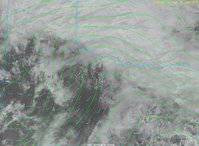Steve Miller TX
EF3
After analyzing weather data this morning, I'm saying home today despite my target area being about 2 hours from home. There just won't be that much CAPE to work. Sure, models show small peaks of 1000j/kg, but about 95% of the warm sector will be 500-850j/kg. That is pretty weak overall. Boundary layer winds are forecast to be on the weak side too given the expected weak instabilities. The "pluses" on today's setup is some noted clearing to the west of the I-35 corridor and a weak warm front in play which should have some decent baroclinicty to it.
However, without stronger low level flow and/or better instabilities, storms will struggle overall. I believe anything worth chasing for me personally will be of a very short duration. I've seen this setup many times before when storms will fire up and become rather robust and then slowly dwindle and then dissipate as they move closer to the I-35 corridor. Part of this is the "source region" for inflow will be from the cloudy regions and thus lower instability almost to the point of being stable. The latest model runs including the HRRR support this.
I'm just too busy and budget conscious to gamble on today's setup. The season is still very young. I'd rather wait for a better setup down the road. Given that I think this season will be an active one for Texas/OK even into mid/late June, I'm not going to have any regrets staying home today. My virtual target today is Jacksboro, TX. Good luck to those venturing out today.
However, without stronger low level flow and/or better instabilities, storms will struggle overall. I believe anything worth chasing for me personally will be of a very short duration. I've seen this setup many times before when storms will fire up and become rather robust and then slowly dwindle and then dissipate as they move closer to the I-35 corridor. Part of this is the "source region" for inflow will be from the cloudy regions and thus lower instability almost to the point of being stable. The latest model runs including the HRRR support this.
I'm just too busy and budget conscious to gamble on today's setup. The season is still very young. I'd rather wait for a better setup down the road. Given that I think this season will be an active one for Texas/OK even into mid/late June, I'm not going to have any regrets staying home today. My virtual target today is Jacksboro, TX. Good luck to those venturing out today.




